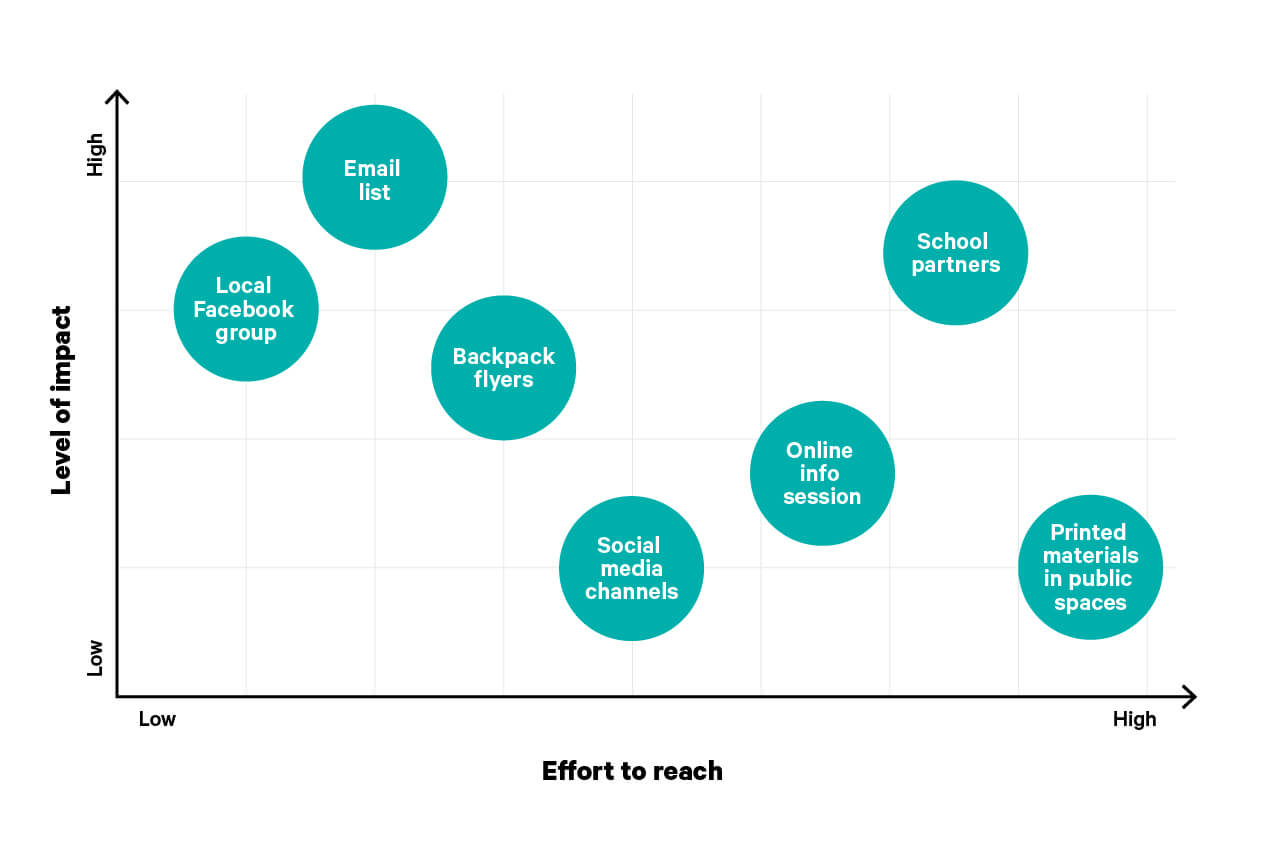Getting started with campaigns
While brand and communications strategies can serve multiple goals and a range of audiences over the long term, campaigns are concentrated efforts to motivate a particular audience to take a specific action. Your brand and overall communications are designed to tackle a marathon course with varying conditions and grades, while a campaign runs a tidy 100 meters on a level surface (and yes, I’m probably the least qualified person on Earth to use this metaphor).
Campaigns are also time-bound — you wouldn’t launch an indefinite campaign, since it would most likely lose its effectiveness as months and years roll by.
I’ve seen nonprofits overwhelmed by the thought of anything but an end-of-year giving push. Multiple platforms, new visuals, new messaging… campaigns seem like a lot, especially if your communications team is trying to manage everyday content distribution. That’s understandable! But an effective campaign can be such a great tool for your organization, driving volunteer sign-ups, event registration, program referrals, petition signatures, and of course, donations.
So let’s create a plan to get your campaign on track; we’ll break down the process, guide your planning, and set you up for success. And in Part II, my colleague Michelle Behar will talk more about data gathering, evaluation, and how you can identify lessons learned to be even more successful the next time around.
Define your goal
A campaign motivates an audience to take one specific action; your goal identifies that action in the most granular terms possible. We recommend using The Management Center’s SMARTIE framework while considering goals. SMARTIE goals are strategic, measurable, ambitious, realistic, time-bound, inclusive, and equitable.
You may note the tension between “ambitious” and “realistic” that seems counterintuitive. How can a goal encompass both? The idea is to set a comfortable challenge for yourself. If you’re investing the resources to do a campaign, you want to aim for more than the status quo . . . otherwise, what’s the point? At the same time, a goal that is too lofty can demotivate your team and your community.
Example goal #1
- Not SMARTIE: Increase program sign-ups
- SMARTIE: Increase program sign-ups from immigrant families by 50% by May 31
Example goal #2
- Not SMARTIE: Raise donations
- SMARTIE: Grow the average gift of individual donors who have experienced our programs from $65 to $90 by December 31.
At Big Duck, we have a lot of thoughts about “raising awareness” as a campaign goal. As founder Sarah Durham says in this 2016 post: “What most organizations say they hope to achieve when they talk about ‘raising awareness’ is usually vague or, at best, underestimated. More nonprofits should question what raising awareness really yields before they commit, and then chart a deliberate course so time and money are wisely invested”.
“Awareness” won’t necessarily spark action, especially when most of us navigate a barrage of information every day. You don’t just want an audience to be aware of your organization — you want them to engage.
And speaking of audiences . . .
Get to know your audiences
Who are the people critical to your success? As with goals, try and be as specific as possible. Once you’ve identified your audiences, consider doing some audience research. Don’t assume you know everything there is to know about your audience. Even a bit of research — a simple survey to a targeted, representative group or a handful of conversations — can go a long way to inform your messaging, channels, and implementation.
Craft your campaign identity
Now develop the theme or concept for your campaign and identify the key messaging. A key messaging document outlines what you must communicate with your audience and how you can share that information most compellingly. Ideally, key messages are informed by your audience research. Figure out:
- What your audiences need to know
- What would get them excited about your initiative
- What action you want them to take
Example key messaging:
For 20 years, we have supported our neighbors with low-cost housing and employment resources. We care deeply about this region and understand our community’s unique needs because we live here too. Unfortunately, those needs now far exceed our current capacity; our waitlist has grown every year since 2019. We’re asking you to support our capital campaign so we can update and expand our facilities, ensuring our doors can stay wide open for anyone who needs us.
Your campaign visuals can closely relate to your organizational brand elements, perhaps with a distinct and differentiating spin. Maybe you lean into a color from your palette or emphasize a graphic element of your logo. Check out our campaign for American Friends Service Committee as an example.
In the same vein, you don’t have to create new content from scratch. Survey what you already have on hand and determine if something can be repurposed. Do you have a recent grant report that summarizes your impact? Audio from a media interview? Graphics created for a community education initiative? Think about how you can remix elements to communicate your key messaging points.
Lastly, create an assets bank for everyone working on campaign content. This resource should include photos, graphics/logos, testimonials, data points, templates, or examples.
Meet your people where they are
Next, determine strategies to get your campaign in front of your audience. They won’t come looking for you – so use what you learned from your research to make it as easy as possible for them to take action.
- Use multiple channels and multiple ways to promote the campaign
- Make the call to action timely and as easy as possible
- Keep the look and feel consistent with your brand
- Highlight what matters to your audiences
Brainstorm opportunities by asking:
- Where will our audiences be?
- Who is connected to them?
- What could we do or offer?
- How could we engage our audiences?
Get practical
Now is the time to think about what you can accomplish within your capacity. Your campaign doesn’t have to be everywhere, all at once. Prioritize your activities by asking:
- Do we have the time and budget to make this happen?
- Will it work to reach our unique audience?
- Do we have (or can we access) the staff, skills, or people power for this?
- Will it help us reach our SMARTIE goals?
You can also plot activities to see how they compare in terms of effort expended and potential impact. You may realize an activity requires a lot of resources for relatively little payoff. Or, conversely, there are low-hanging opportunities that could be highly effective.

Develop your plan
To run a successful campaign, you need to know:
- What you’re doing
- When you’re doing it
- Who’s doing what
We highly recommend a campaign calendar or project management tool (like Asana or Basecamp) to keep your team organized, set dates and deadlines for when campaign materials need to be created and distributed, and have a shared place where everyone working on the campaign can see all the activities and their progress. When building your calendar:
- Note specific timeline requirements
- Plan for internal milestones (e.g. planning, reviewing) and external milestones (pressing send on the email)
- Note existing commitments, events, and activities
- Make sure there is a steady stream of coordinated activities
Then keep your calendar alive! I’ve been guilty of setting up a beautiful campaign calendar and then letting it sit in pristine, aspirational perfection while the campaign rolled off course. So keep your calendar alive — revisit, update, and adjust it as things progress.
We also recommend a MOCHA or DACI framework to delineate campaign responsibilities and confirm the roles for feedback and approval throughout the campaign.
Track your impact
Before you launch, identify some key metrics to track — number of sign-ups, social media shares, total dollars raised, etc. Perform some regular checks on the health and effectiveness of your campaign; don’t be afraid to change things up if something isn’t working! Just make sure you inform your team and update your calendar.
And stay tuned . . . part two of our feature on campaigns will drop on August 28 and dive further into campaign metrics and evaluation.






